Your cart is currently empty!
Tag: Butchering chicken
-
One Month Old Chicks
[wpvideo rgQHYlCj]
The chicks which hatched December 19, 2013, are four months old now, nearly a month old. They are getting quite independent and running ahead of their mother. She’s the one trying to keep up with them now.
Some mothers stop their child rearing around now. Others continue for another month or two. We’ll see how long she keeps on the job.
-
Where Do You Want Your Chicken to Come From?

Foster Farms, Livingston Where would you prefer to get your chicken? From a plant like this Foster Farms processing plant which was recently closed due to cockroach infestation? At a plant like this, up to 140 chickens move through the processing line a minute. That is more than two chickens a second. And the chicken processing companies want to speed these processing lines up to 175 chickens per minute.

Butchering Cabin Or would you rather get your chickens from a quiet cabin in the woods where chickens are butchered just one at a time, and only five or so chickens are ever butchered in a single day, with each one being handled with great care?
Chickens at a man and his hoe never leave their home. They are never transported in crowded containers to processing plants miles from home. Instead, they are carefully caught, and once caught, their heads are covered with soft towels to keep them calm. They never see what is happening to them, and the other chickens never see another chicken being butchered.
It is your choice.
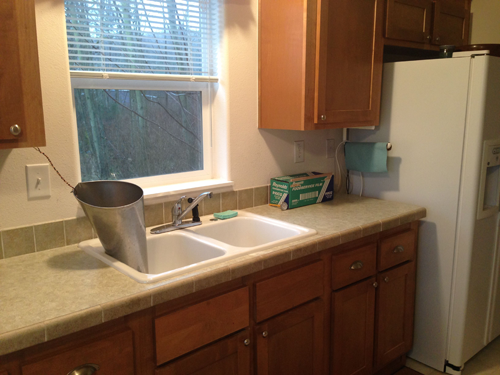
Butchering Kitchen 
Processed chickens -
Fresh Liver
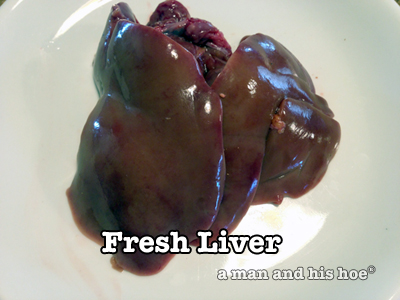
Fresh Liver You’ll never find liver like this in the store. Liver from chickens which exercise much of the day, get plenty of fresh air and sunshine, is plump and dry.
When chickens are out walking all day, rummaging for food, playing, and having a good time, they are pumping copious amounts of oxygenated blood through their bodies, much like people who exercise. Chickens raised in cramp quarters and butchered at a very young age, never attain the level of health of chickens raised outdoors. And this shows in the quality of their livers.
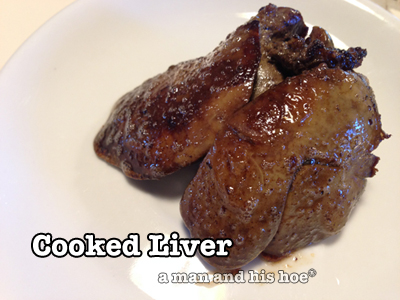
Cooked Liver Fried in butter, chicken fat, or olive oil for several minutes on each side, it has so much flavor that no salt is needed. In fact, you should first taste it before adding any salt. Often salt, instead of enhancing the flavor of foods, just makes foods taste like salt.
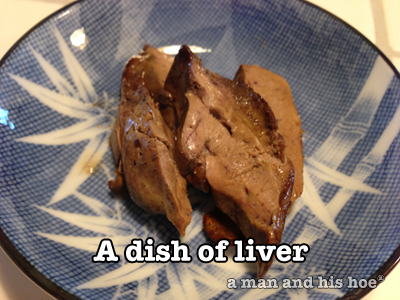
Dish of Liver Liver is best eaten within a few hours of processing a chicken. Are there any stores which sell chicken liver from chickens butchered that day? Let me know if you find one. The next time you buy chicken liver in a store, ask the grocer when the liver was taken. If they don’t know, what does that say about their concern for the quality of the food they sell to you?
-
Rooster Cull

Too Many Roosters A sure sign that there are too many roosters roaming about is to find hens on their roost during the day. Young roosters especially can harass hens more than the hens want.
So after you’ve caught a rooster to cull, what tools do you need to take care of him? Not many. The tools below will suffice.
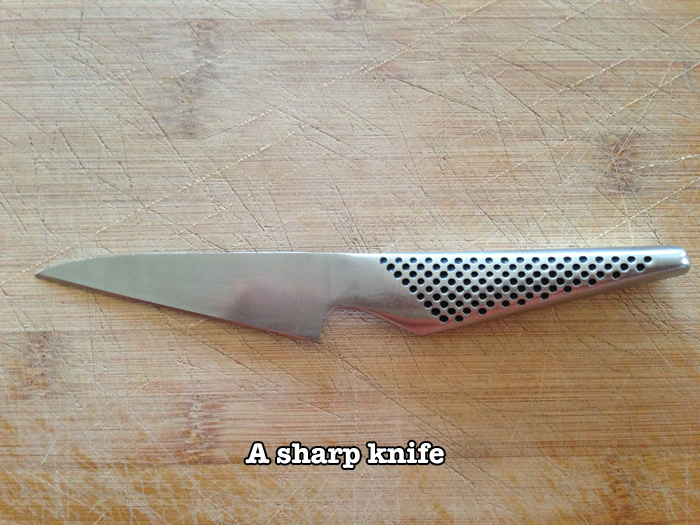
A Sharp Knife

Scissors
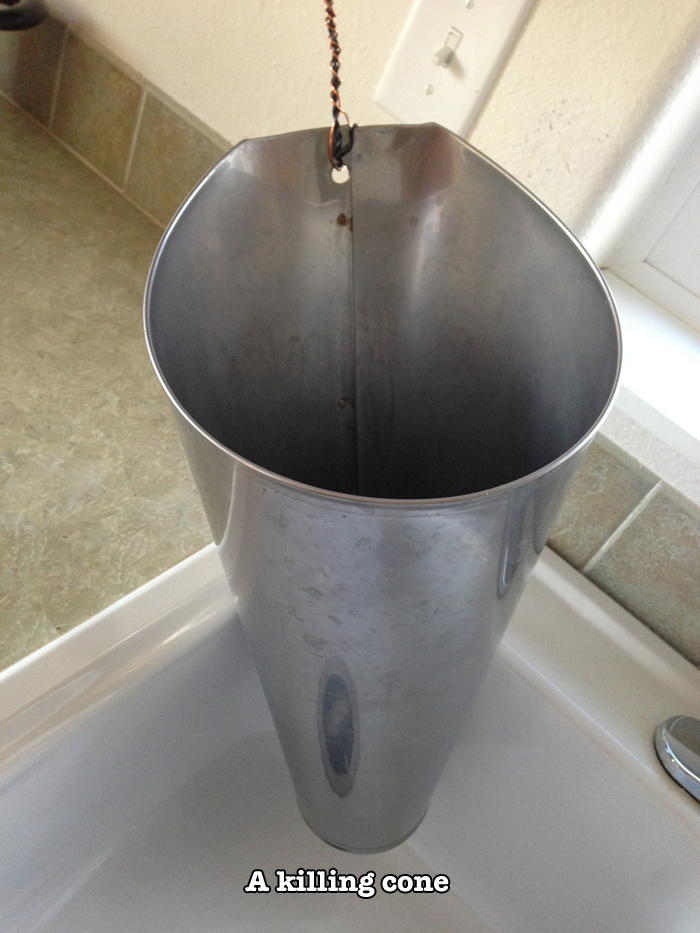
A Killing Cone

A Pot of Hot Water
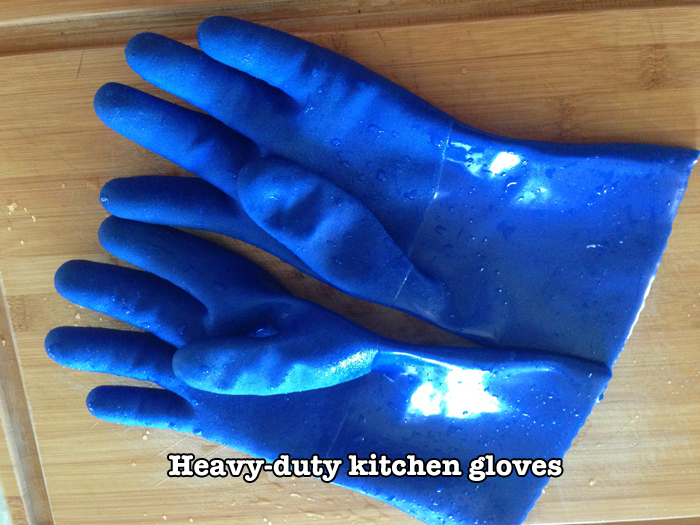
Heavy Duty Kitchen Gloves Today’s cull resulted in a four pound plus rooster. But as you can see, this one has had his share of battles with other roosters.

Battle Scarred Rooster Nevertheless, it will end up making a wonderful roast. At seven months old, it is also a good candidate for canning.

Four Pound Rooster Maintaining of flock of roosters, hens and growing chicks, is nothing like raising meat chickens by the tens of thousands. The dynamics of chicken culture are complex. Hens like roosters and you often see them flirting with their favorite ones. At the same time, too many young roosters can be a pain in the ass for hens, not to mention a threat to the older ones. But the rewards are worth it. The eggs are out of this world. The variety, flavor, and texture of these chickens just can’t be found in any store.
-
Two Week Old Chicks
[wpvideo UOxJcej6]
The chicks are two weeks old today. Even though it’s a wet December day, their mother is taking them a long way from the cozy, dry barn where they bed down during the night. Flower beds are favorite spots for chickens to scratch, so if you are planning on getting chickens and want beautiful flower beds, you’ll need to pick one or the other. Or you’ll need to protect your flower beds with fencing.
Out at the edge of the woods, when it’s time for protection or to get out of the steady rain, the chicks will huddle underneath their mother. A little rain doesn’t stop her.